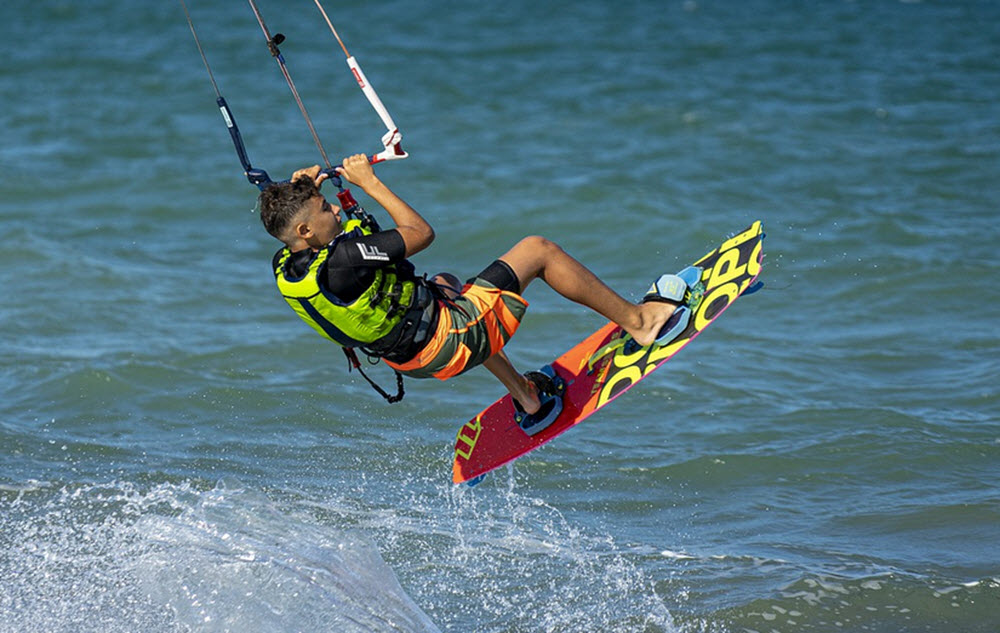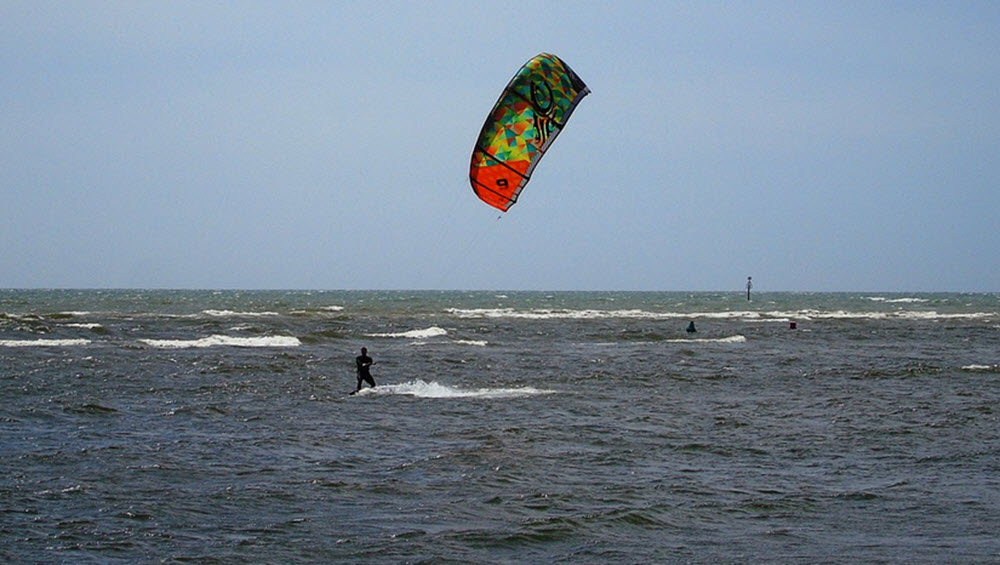Contents
Kiteboarding is a sport where a large controllable power kite is used to propel the participant across land, water or snow.

Wave-riding
There are many different variants of kiteboarding, and wave riding – also known as kitesurfing – is one of them. It can be described as a combination of kiteboarding and surfing.
If the wave-rider follows the kite while riding the wave, the pull of the kite is reduced. This style is similar to tow-in surfing.
Where?
Wave-riding is carried out along beaches where there is a wave break.
The board and the straps
Most wave-riders use a directional board that has enough flotation to surf the wave. It needs to have good turning characteristics.
Some people prefer to have foot straps, while others chose to do without and ride strapless. Without foot straps, the wave-rider is free to move their feet and therefore has the ability to position their weight over a greater area on the board.
Riders that use foot straps are more likely to rely on the kite for propulsion, rather than rely on the power of the wave.
Wakestyle
This is a cross-over from wakeboarding, and you use a wakeboard with foot bindings and wake booties.
Wakestylers are known for their acrobatics, and some do jumps that involve ramps.
Where?
Wakestyling is typically carried out on flat, calm water.
Course racing events
Participants at these events tend to use special directional race boards equipped with long fins. Some of these raceboards are fairly similar to windsurfing boards.
There are also events where foilboards are allowed.
Background

As early as the 19th century, kites with a four-line control system were used to propel carts on land and boats on water. One of the pioneers was Gerge Pocock, and his four-line control system was very similar to the one that is still in use today among kiteboarders.
Another kite pioneer was Samuel Cody, who in the early 20th century developed man-lifting kites.
The 1970s
The 1970s was an important decade, because modern materials such as Kevlar was utilized to make better kites. Spectra, a lightweight high-strength oriented-strand gel spun through a spinneret, revolutionized the making of flying lines.
In 1977, Gijsbertus Adrianus Panhuise in the Netherlands received the first patent for KiteSurfing. The patent was for “a water sport using a floating board of a surf board type where a pilot standing up on it is pulled by a wind catching device of a parachute type tied to his harness on a trapeze type belt”.
The 1980s
Experimentation with kites continued throughout the 1980s, and this included various combinations of kites with water skis.
The German Dieter Strasilla used his kite to propel both snow skis, snowboards and surfboards.
In 1984, the Legaignoux brothers patented an inflatable kite design in France.
The 1990s
The patented KiteSki system was launched by Bill and Cory Roeseler in 1994. With this system, a pair of water skis were powered by a two line delta style kite controlled via a bar-mounted combined winch/brake. Notably, the kite had a (albeit rudimentary) water launch capability.
In the late 1990s, Cory Roeseler tweaked the system by using a single board instead of two skis. The board was similar to a surfboard.
